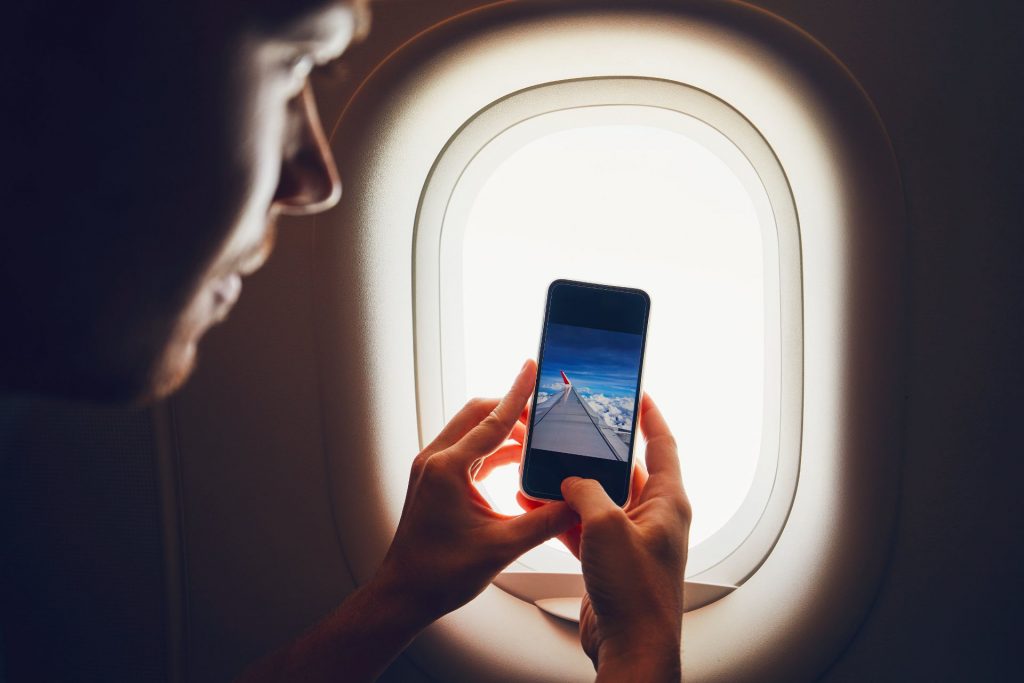
Every time I board an airplane, the same bothering scene repeats. The annoyed reaction of some people when all passengers are required to turn off their electronic devices such as laptops, tablets and especially, mobile phones. Regardless of whether it is a local or an international flight, there is always someone pissed off with the instructions, pretending not to listen.
For me, it has become a habit. I would rather do it directly than be ‘invited’ to follow the rules. So I consider flights as a break from everything waiting for me on the ground. But do smartphone addicts really need to make a ‘sacrifice’ of being disconnected from social networks, phone calls, e-mails…? Is there a real risk if we don’t switch our phones off or turn the “airplane mode” on?
Why was the use of electronic devices in airplanes banned in the 1990s?
A mobile phone is a transmitter, an electronic device which produces radio waves to communicate you.
To make or receive a call, the device looks for the nearest cell tower around to connect. Every tower covers a specific radius, larger or smaller, depending on the terrain conditions (flat areas, hills, urban or countryside, etc.). When you are in an airplane, every time it goes higher, your mobile is farther away from the range the towers cover. So to support your calls, the phone waves will increase (electromagnetism) and this transmission could interfere with the aircraft systems.
Researchers have alerted about electromagnetism produced by electronic devices in the 800 – 900 MHz range, saying those could disturb the unprotected cockpit instruments. Have you heard the annoying ‘buzz’ in your speakers when you suddenly receive a call? This is a small example of radio-frequency interference.
These seemed to be the main concerns in the early 1990s when the ban on using phones and other electronic devices was enacted.
Fun fact. In the U.S., it was the Federal Communications Commission (FCC) and not the Federal Aviation Association (FAA) who banned cell phone use on planes. You may wonder why. The answer is simple. When calling someone at 10,000 feet, the waves bounce between multiple towers trying to connect you, instead of connecting to one tower at the time when you are on the ground. This results in an overflow in the network that could affect the service of the people flying on airplanes and the rest of the users on the ground.
Almost 30 years after the ban…
Technology in both airplanes and electronics has evolved a lot. The complex machines and critical systems required for an aircraft to work properly are less affected by interference coming from electronics. At least this is what manufacturers say and I want to believe them. And we have smartphones and other devices with the “airplane mode” feature that turns off the cell radio for Wi-Fi, Bluetooth, GPS, calls and texting until you re-enable it.
We are not allowed to call or use our Internet data. Yet, every day more airlines offer communication services on board like paid Wi-Fi and even calls. These facts counter the arguments to support the ban.
Fear and business behind the ban.
The debate continues, but we can understand why it happened all these years ago. When you think about the safety of thousands of passengers, even with a minimum possibility of risk, you prefer caution.
Of course, mobile companies played an important role. The cell towers were getting oversaturated and some of the users on the ground were left without service. How could people comply with the ban even better? If you tell them that the aircraft can go down?
With the fast rhythm, new mobiles appear on the market. Test every new model’s effects could be a big and expensive challenge. So to ban is an easier solution.
However, let’s face it, if our devices could bring down an airplane they should have been absolutely forbidden a long time ago.